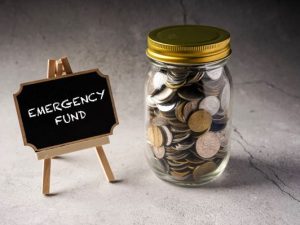The Basics
Welcome to another edition of our personal finance blog! Today, we’re diving into a fundamental aspect of financial planning that often gets overlooked in the excitement of investing: the emergency fund. While investing is a fantastic way to grow your wealth, it’s crucial to build a solid financial foundation first. Let’s explore why having a sufficient emergency fund is key to successful long-term financial planning.

What is an Emergency Fund?
Simply, an emergency fund is a stash of money set aside to cover unexpected expenses. It is there to act as a financial safety net when a curveball gets thrown your way, and provides you with peace of mind knowing that you can meet these expenses without having to borrow money or drawdown from investments. Typically, we recommend that individuals hold between 3-6 months expenditure in a readily accessible cash account. This means that you can access your cash at anytime without penalty, providing you with maximum flexibility.
What are the Benefits?
Avoiding High Interest Debt
We have all been there before, just as you get some money, life gets in the way and all of a sudden you are forking out on unexpected expenses such as car repairs or children. However, by having rainy day money stashed away, you are able to avoid short term expensive credit and save yourself from the cycle of debt.
Avoiding Selling Investments
Furthermore, life is unpredictable, and unexpected expenses can arise at any time. Without a sufficient emergency fund, you may find yourself forced to sell investments at an inopportune time, which can lead to crystallising capital losses and missing out on long-term gains.

Peace of Mind For Better Decision Making
Knowing that you have a financial safety net allows you to make investment decisions with a clear mind. It provides emotional stability, helping you stay focused on your long-term goals without being swayed by short-term financial challenges.
Once you’ve established a robust emergency fund, you can turn your attention to investing with confidence. Here’s how the two go hand-in-hand:
Strategic Asset Allocation:
With an emergency fund in place, you can allocate your investment portfolio with a long-term perspective. You won’t need to liquidate investments prematurely during market downturns to cover unexpected expenses, enabling you to ride out market fluctuations and potentially benefit from compounding over time.
Opportunity Ceasing:
Having a financial cushion empowers you to seize investment opportunities when they arise. Whether it’s a market dip or a promising investment option, you can confidently make decisions without the fear of jeopardizing your financial stability.
Summary
Building wealth is a journey, not a race. While the allure of quick investment returns may be tempting, it’s essential to prioritise the foundation – an emergency fund. By establishing this safety net, you’re not only protecting yourself from life’s uncertainties but also setting the stage for successful, stress-free investing. Remember, it’s not just about making money; it’s about making smart, sustainable financial choices that lead to lasting prosperity.